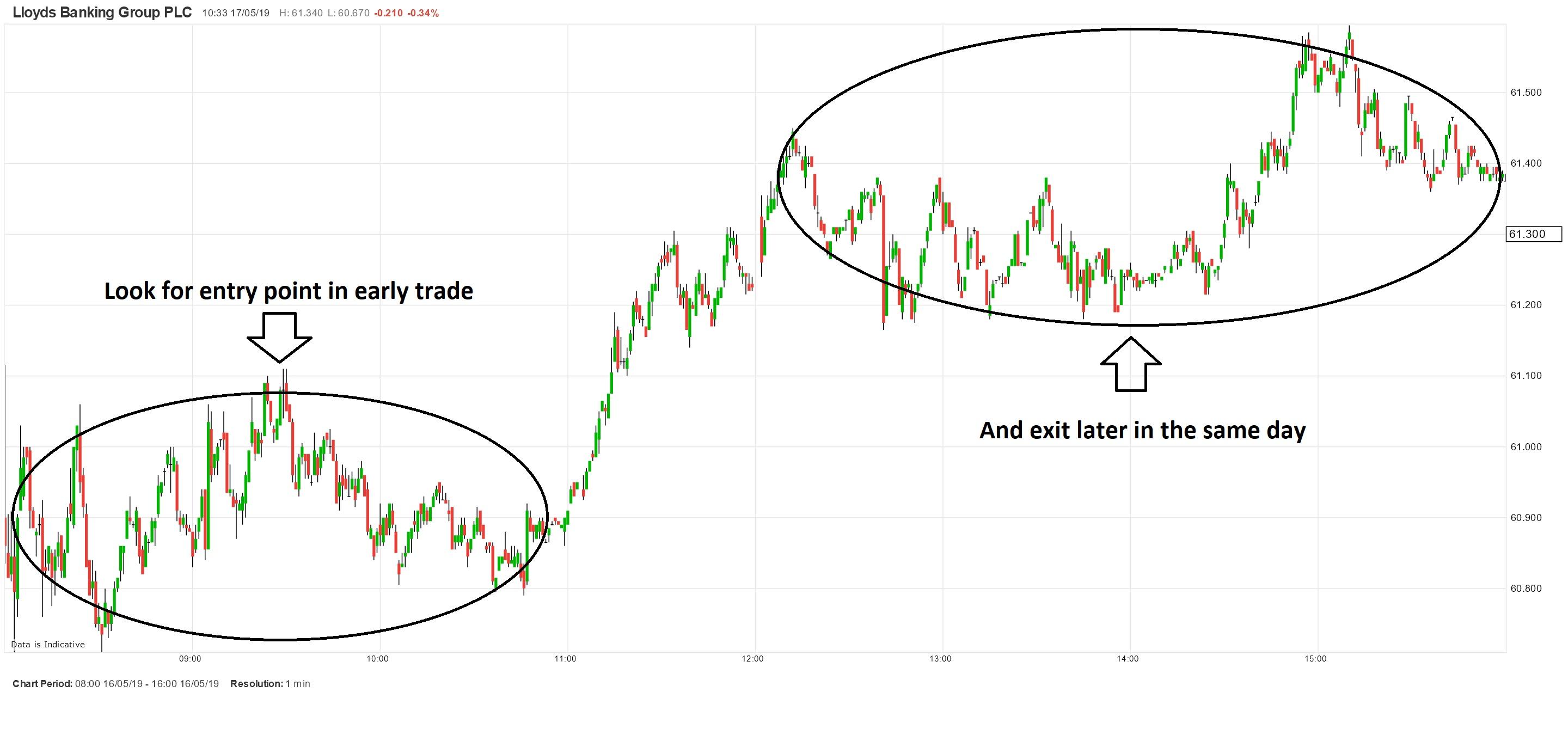Introduction
Welcome to the exciting world of stock trading! If you’ve ever been intrigued by the fast-paced nature of the stock market and the potential for financial gain, you’re in the right place. Learning how to trade stocks can be a rewarding and profitable venture, but it requires knowledge, strategy, and discipline.
Trading stocks involves buying and selling shares of publicly traded companies on various stock exchanges. It offers individuals the opportunity to participate in the financial markets and potentially profit from the fluctuations in stock prices.
However, it’s important to note that trading stocks carries risks. Prices can fluctuate rapidly, and there’s always the possibility of losing money. That’s why it’s crucial to approach stock trading with a well-thought-out plan, a solid understanding of the market, and a commitment to continuous learning.
This comprehensive guide will provide you with the necessary steps to start learning and trading stocks. Whether you’re a beginner or have some experience, this guide will help you build a strong foundation, develop effective strategies, and navigate the complexities of the stock market. By the end of this journey, you’ll be equipped with the knowledge and skills to make informed trading decisions.
So, fasten your seatbelt and get ready to embark on an exciting adventure into the world of stock trading. Remember, success in trading doesn’t happen overnight, but with perseverance, dedication, and the right approach, you can achieve your financial goals.
Understanding the Stock Market
Before diving into stock trading, it’s essential to have a solid understanding of the stock market and how it functions. The stock market is a platform where buyers and sellers come together to trade shares of publicly listed companies.
The two primary stock markets are the primary market and the secondary market. The primary market is where companies issue shares to raise capital for their business operations. This is done through an Initial Public Offering (IPO), where shares are first made available to the public. The secondary market, on the other hand, is where investors trade these already issued shares among themselves.
Stock prices are determined through the forces of supply and demand. When there is high demand for a particular stock, its price tends to increase. Conversely, when there is more supply than demand, the price may decrease.
Investors and traders use various methods to analyze stocks and make informed decisions. Fundamental analysis involves evaluating a company’s financial health, such as its revenue, earnings, and market position. Technical analysis, on the other hand, focuses on studying stock price patterns, trends, and indicators to predict future price movements.
There are different types of stock orders that traders use to buy or sell stocks. A market order is executed immediately at the prevailing market price, while a limit order specifies a specific price at which the trader is willing to buy or sell.
The stock market can be influenced by numerous factors, including economic data releases, company news, geopolitical events, and investor sentiment. It’s crucial to stay informed about these factors and their potential impact on the stock market.
By understanding the basics of the stock market, you’ll be better equipped to navigate the complexities of trading. In the next section, we’ll delve deeper into building a strong foundation for your stock trading journey.
Building a Strong Foundation
Before you start trading stocks, it’s important to build a strong foundation of knowledge and skills. This foundation will serve as the bedrock for your success in the stock market. Here are some key steps to help you establish a solid foundation:
1. Educate Yourself: Take the time to learn about the basics of stock trading, including terminology, trading methodologies, and risk management. There are numerous online resources, books, and courses available to help you gain the necessary knowledge.
2. Define Your Financial Goals: Clarify why you want to trade stocks and what you hope to achieve. Setting specific and realistic financial goals will help you stay focused and motivated throughout your trading journey.
3. Develop a Trading Plan: A trading plan acts as your roadmap in the stock market. It outlines your trading strategies, risk tolerance, and trade management rules. A well-designed plan will guide your decision-making process and help you stay disciplined.
4. Understand Risk Management: Risk management is crucial in stock trading. Learn how to calculate risk-reward ratios, set stop-loss levels, and diversify your portfolio. By managing your risk effectively, you can protect yourself from significant losses.
5. Start with Paper Trading: Practice trading without risking real money by using a paper trading account. This allows you to test your strategies and gain confidence before jumping into live trading.
6. Choose a Reliable Broker: Select an online brokerage firm that suits your trading needs. Consider factors such as commissions, trading platform features, customer support, and the availability of educational resources.
7. Network and Seek Advice: Engage with other traders, join forums or online communities, and seek advice from experienced professionals. Networking can provide valuable insights and expand your knowledge.
8. Keep Learning: The stock market is dynamic and constantly evolving. Stay updated with the latest market trends, news, and trading strategies. Continuously learning and adapting to changes will give you a competitive edge.
9. Be Patient and Persistent: Successful stock trading takes time and effort. Don’t expect overnight results. Stay patient, embrace the learning process, and persist through challenges.
By focusing on building a strong foundation, you’ll increase your chances of success in the stock market. In the next section, we’ll delve into setting financial goals to help guide your trading journey.
Setting Financial Goals
Setting clear and achievable financial goals is vital when it comes to trading stocks. Without well-defined goals, it’s easy to get lost in the vast sea of possibilities and make impulsive decisions. Here are some steps to help you set effective financial goals:
1. Identify Your Motivation: Ask yourself why you want to trade stocks. Is it to supplement your income, save for retirement, or pursue financial independence? Understanding your motivation will help you set meaningful goals.
2. Be Specific: Clearly define what you want to achieve financially. Instead of saying, “I want to make money,” set specific targets like, “I want to earn $500 per month from trading.”
3. Set Realistic Goals: Make sure your goals are attainable within your timeframe and trading skills. Setting unattainable goals can lead to frustration and disappointment. Start with smaller goals and gradually increase your targets as you gain experience.
4. Break it Down: Divide your long-term financial goals into smaller short-term milestones. This will make your goals more manageable and help you track your progress along the way.
5. Establish a Timeframe: Determine when you want to achieve your financial goals. Setting a deadline creates a sense of urgency and encourages you to stay focused and disciplined.
6. Quantify Your Goals: Attach a specific monetary value or percentage to your goals. For example, you might aim to achieve a 10% return on your investment within a year.
7. Consider Risk Tolerance: Assess your risk tolerance and factor it into your goals. If you are risk-averse, your goals may focus on capital preservation rather than aggressive growth.
8. Regularly Review and Adjust: Revisit your financial goals periodically and make adjustments as needed. Market conditions and personal circumstances can change, so it’s important to remain flexible.
By setting clear financial goals, you provide yourself with direction and purpose in your trading journey. These goals will serve as beacons that guide your decision-making process and keep you motivated. In the next section, we’ll explore the process of choosing a trading strategy that aligns with your goals and preferences.
Choosing a Trading Strategy
When it comes to trading stocks, having a well-defined trading strategy is crucial. A trading strategy is a set of rules and guidelines that dictate when and how you will enter and exit trades. It provides structure and consistency in your approach to the market. Here are some key considerations to help you choose the right trading strategy:
1. Timeframe: Determine your preferred timeframe for trading. Are you more inclined towards short-term trading, such as day trading or swing trading, or do you prefer longer-term investing? Understanding your timeframe will help narrow down your options.
2. Trading Style: Consider your trading style and personality. Are you comfortable with quick decision-making, monitoring charts throughout the day, and executing trades frequently? Or do you prefer a more patient approach, holding onto investments for a longer time? Your trading style should align with your personality for optimal results.
3. Technical or Fundamental: Decide whether you want to focus on technical analysis, which involves studying stock charts and patterns, or fundamental analysis, which requires analyzing company financials and news. Some traders combine both approaches to gain a more comprehensive understanding of the market.
4. Risk vs. Reward: Evaluate your risk tolerance and determine the level of risk you are comfortable with. Some strategies aim for smaller, more frequent gains with tighter stops, while others go for larger profits but with greater potential losses. Finding the right balance between risk and reward is essential.
5. Profitability: Research and assess the historical performance of different trading strategies. Look for strategies that have proven to be profitable over time. Understand their winning percentage, average gains, and drawdowns to make an informed decision.
6. Education and Resources: Consider the availability of educational resources and support for the strategy you are interested in. Look for books, courses, mentors, or online communities that can help you refine and improve your chosen strategy.
7. Practice and Adaptability: Once you choose a trading strategy, practice it thoroughly before risking real money. Monitor your performance and be willing to adapt and refine your strategy based on market conditions and personal experiences.
Remember, there is no one-size-fits-all strategy in trading. What works for one trader may not work for another. It’s essential to choose a trading strategy that aligns with your goals, preferences, and risk appetite. In the next sections, we’ll explore fundamental analysis, technical analysis, and risk management, which are key components of many trading strategies.
Studying Fundamental Analysis
Fundamental analysis is a method of evaluating stocks based on the underlying financial and qualitative factors of a company. By studying fundamental factors, traders aim to assess the intrinsic value of a stock and make informed investment decisions. Here are some key aspects to consider when studying fundamental analysis:
1. Financial Statements: Start by analyzing the financial statements of a company, including the income statement, balance sheet, and cash flow statement. These reports provide insights into the company’s revenue, expenses, assets, liabilities, and cash flows.
2. Earnings and Revenue: Examine the company’s earnings and revenue growth over time. Look for consistent growth patterns, as well as any fluctuations or anomalies. Positive earnings and revenue trends indicate a healthy and potentially profitable company.
3. Profitability Ratios: Evaluate profitability ratios such as gross profit margin, operating profit margin, and net profit margin. These ratios assess the company’s ability to generate profits from its operations.
4. Debt Levels: Assess the company’s debt levels and financial leverage. High levels of debt can indicate higher risk and potentially impact the company’s ability to grow and meet its financial obligations.
5. Industry Analysis: Consider the industry in which the company operates. Analyze industry trends, competitive dynamics, and market conditions that may influence the company’s performance.
6. Management and Governance: Evaluate the quality and track record of the company’s management team. Look for transparency, integrity, and a history of making sound business decisions. Additionally, consider the company’s corporate governance structure and practices.
7. Competitive Advantage: Assess whether the company has a competitive advantage or unique selling proposition that sets it apart from its competitors. This could be in the form of patents, proprietary technologies, strong brand recognition, or strategic partnerships.
8. Industry and Economic Events: Stay updated with industry and economic events that may impact the company. This includes changes in government regulations, shifts in consumer behavior, and global economic indicators.
9. Qualitative Factors: Consider qualitative factors such as the company’s reputation, brand strength, customer loyalty, and management’s vision for the future. These intangible aspects can heavily influence a company’s long-term performance.
By studying fundamental analysis, you’ll gain a deeper understanding of the financial health and prospects of a company. This knowledge will enable you to make informed investment decisions based on the intrinsic value of stocks. In the next section, we’ll explore the world of technical analysis and its role in stock trading.
Mastering Technical Analysis
Technical analysis is a method of analyzing stock price patterns, trends, and indicators to predict future price movements. It is based on the belief that historical price data can provide insights into the future direction of a stock. Mastering technical analysis allows traders to identify potential entry and exit points, manage risk, and make well-informed trading decisions. Here are key elements to consider when studying technical analysis:
1. Price Charts: Technical analysis relies heavily on price charts, which depict the historical price movements of a stock. Different types of charts, such as line charts, bar charts, and candlestick charts, are used to identify patterns and trends.
2. Trend Analysis: Identify the direction of the overall price trend. Trends can be upward (bullish), downward (bearish), or sideways (consolidation). Trendlines and moving averages can be used to visualize and confirm trends.
3. Support and Resistance Levels: Determine key support and resistance levels based on historical price levels where buying or selling pressure has been significant. These levels can act as barriers for price movement and provide potential trading opportunities.
4. Chart Patterns: Study chart patterns such as triangles, double tops/bottoms, head and shoulders, and flags. These patterns can indicate potential price reversals, breakouts, or continuation of trends.
5. Volume Analysis: Analyze trading volume in conjunction with price movements. Volume can provide insights into the level of buying or selling activity in a stock, confirming the strength or weakness of a trend.
6. Indicators: Utilize technical indicators, such as moving averages, oscillators (like MACD and RSI), and momentum indicators (such as Stochastic and Bollinger Bands). These indicators can help identify overbought or oversold conditions, trend reversals, and market momentum.
7. Candlestick Patterns: Learn to interpret candlestick patterns, which can reveal market sentiment and potential trend reversals. Patterns like doji, engulfing, hammer, and shooting star can provide valuable insights into price action.
8. Timeframes: Consider different timeframes for analysis, such as daily, weekly, or intraday charts. Multiple timeframes can provide a comprehensive view of price movements and help identify short-term and long-term trends.
9. Backtesting and Practice: Backtest trading strategies using historical data to evaluate their effectiveness. Practice analyzing charts and identifying patterns in real-time to improve your skills and decision-making abilities.
10. Continued Learning: Stay updated with new technical analysis tools, theories, and market developments. Attend webinars, read books, and follow reputable trading blogs to expand your knowledge and adapt to changing market conditions.
Mastering technical analysis requires practice, patience, and continuous learning. By understanding price patterns, indicators, and chart analysis techniques, you can gain valuable insights into the behavior of stocks and improve your trading decisions. In the next section, we’ll explore the importance of risk management in stock trading.
Learning Risk Management
Risk management is a crucial aspect of successful stock trading. It involves identifying, assessing, and mitigating risks to protect your capital and ensure long-term profitability. By implementing effective risk management strategies, you can safeguard yourself against potential losses and preserve your trading capital. Here are key factors to consider when learning risk management:
1. Define Your Risk Tolerance: Assess your personal risk tolerance level, taking into account your financial situation, objectives, and comfort with volatility. This will help you establish the maximum amount of risk you are willing to take on each trade.
2. Position Sizing: Determine the appropriate position size for each trade based on your risk tolerance. Consider factors such as stop-loss levels, account size, and the potential loss you are willing to accept.
3. Set Stop-Loss Orders: Implement stop-loss orders to automatically exit a trade if the price reaches a predetermined level. This helps limit potential losses and allows you to exit positions before they become too risky.
4. Diversification: Spread your investments across different stocks, sectors, and asset classes to reduce exposure to any single investment. Diversification helps minimize the impact of losses from individual stocks and lowers overall portfolio risk.
5. Use Risk-Reward Ratios: Determine the potential reward relative to the risk for each trade. Aim for a favorable risk-reward ratio, where the potential reward is greater than the potential loss. This helps ensure that the potential profit justifies the risk taken.
6. Stay Informed: Stay updated with company news, economic indicators, and market trends that could impact your trades. Being aware of potential risks and market conditions will enable you to make more informed decisions.
7. Control Emotions: Emotions can cloud judgment and lead to irrational decisions. Avoid making impulsive trades based on fear or greed. Stick to your trading plan and strategy, even during periods of market volatility.
8. Review and Adapt: Regularly review your trading performance and risk management strategies. Identify areas for improvement and make adjustments as necessary. Learn from your mistakes and continually refine your risk management approach.
9. Use Protective Measures: Consider utilizing options and hedging strategies to reduce the impact of adverse price movements. These tools can provide added protection and help mitigate potential losses.
10. Practice Risk Management Consistently: Make risk management an integral part of your trading routine. Consistently applying risk management principles across all trades will help you develop discipline, protect your capital, and improve your long-term profitability.
Mastering risk management is essential for long-term success in stock trading. By implementing effective risk management strategies, you can protect your capital, minimize losses, and increase the probability of achieving consistent and profitable trading results. In the next section, we’ll explore the importance of developing a trading plan.
Developing a Trading Plan
A trading plan is a vital tool for any stock trader, as it provides structure, consistency, and a roadmap for making trading decisions. A well-developed trading plan acts as a guideline for your trading activities and helps you stay focused and disciplined. Here are key steps to consider when developing a trading plan:
1. Define Your Trading Goals: Clearly establish your financial goals, risk tolerance, and trading objectives. Determine whether you are seeking short-term profits, long-term growth, or a combination of both.
2. Choose Your Preferred Trading Style: Decide on the trading style that aligns with your goals and personality. Are you more suited to day trading, swing trading, or position trading? Each style has its own characteristics and time commitments.
3. Set Your Trading Timeframes: Determine the timeframe you will focus on, such as daily, weekly, or even intraday. This decision will influence the type of analysis you perform and the frequency of your trading activities.
4. Identify Tradable Instruments: Determine the type of stocks or other financial instruments you will trade. Consider factors such as liquidity, volatility, and the sectors or industries you are interested in.
5. Develop Entry and Exit Strategies: Create specific criteria and rules for entering and exiting trades. Identify technical or fundamental indicators that will trigger your trades. Consider stop-loss and take-profit levels to manage risk and lock in profits.
6. Risk Management: Incorporate risk management strategies into your trading plan. Set guidelines for position sizing, stop-loss orders, and risk-reward ratios. Define the maximum amount of capital you are willing to risk on any single trade.
7. Analyze and Monitor: Determine how you will conduct your market analysis. Will you primarily use technical analysis, fundamental analysis, or a combination of both? Define the tools, indicators, and resources you will rely on to make informed trading decisions.
8. Trade Execution: Determine the specific criteria for executing trades. Will you use market orders, limit orders, or stop orders? Make sure your trading plan includes guidelines for order execution to ensure consistency in your trading approach.
9. Practice and Backtest: Test your trading plan in a simulated or paper trading environment before risking real money. Backtest your strategies using historical data to evaluate their performance. Refine your plan based on your results.
10. Review and Adapt: Regularly review the performance of your trading plan. Analyze your trades, assess what worked and what didn’t, and make necessary adjustments. A trading plan should be a dynamic document that evolves with your experience and market conditions.
By developing a well-thought-out trading plan, you establish a systematic approach to your stock trading activities. It provides clarity, discipline, and consistency, which are essential for success in the markets. In the next section, we’ll explore the process of selecting an online broker to execute your trades.
Selecting an Online Broker
Choosing the right online broker is a crucial step in your stock trading journey. An online broker serves as your gateway to the financial markets, providing the platform and tools necessary to execute trades. Here are some key factors to consider when selecting an online broker:
1. Regulation and Security: Ensure that the broker is regulated by a reputable financial authority. This ensures that the broker operates within strict guidelines and provides protection for your funds.
2. Trading Platform: Evaluate the broker’s trading platform for ease of use, accessibility, and functionality. The platform should offer real-time market data, an intuitive interface, and a variety of order types to suit your trading style.
3. Commission and Fees: Review the commission structure and fees charged by the broker for trades, account maintenance, and withdrawals. Consider how these costs will impact your overall trading profitability.
4. Product Offerings: Check the range of financial instruments available for trading. Ensure that the broker offers access to the stocks, ETFs, or other assets you want to trade. Additionally, consider if the broker provides access to other markets or international exchanges if you’re interested in diversifying your portfolio.
5. Customer Support: Assess the quality and availability of customer support. Look for brokers that offer responsive and knowledgeable customer service through various channels such as phone, email, or live chat.
6. Educational Resources: Consider the educational resources and tools provided by the broker. Look for educational materials, webinars, tutorials, and research reports that can enhance your trading knowledge and skills.
7. Trading Tools and Analysis: Evaluate the broker’s trading tools and research capabilities. Look for features like technical analysis indicators, charting tools, news updates, and market analysis reports. These tools can assist you in making informed trading decisions.
8. Account Types: Consider the different types of trading accounts offered by the broker. Assess factors such as minimum deposit requirements, account currency options, and any additional benefits or perks provided.
9. Execution Speed and Reliability: Verify that the broker offers fast and reliable trade execution. This ensures that your orders are executed swiftly at the desired price, minimizing slippage and enhancing overall trading performance.
10. User Feedback and Reviews: Research user feedback and reviews about the broker’s services. Consider the experiences of other traders to gain insights into the broker’s reputation and reliability.
By carefully evaluating these factors, you can select an online broker that aligns with your trading needs and preferences. Remember that the choice of broker can significantly impact your trading experience, so take the time to make an informed decision. In the next section, we’ll explore the importance of practicing with paper trading before committing real capital.
Practicing with Paper Trading
Before diving into live trading with real money, it’s highly recommended to practice with paper trading. Paper trading, also known as simulated trading or virtual trading, allows you to trade in a risk-free environment using virtual money. This practice helps you gain valuable experience, test your strategies, and build confidence before committing actual capital. Here’s why paper trading is essential:
1. Learning the Ropes: Paper trading offers a safe space to learn the mechanics of the trading platform, understand order execution, and familiarize yourself with various trading tools and features.
2. Testing Strategies: Practice implementing different trading strategies without the fear of losing real money. Test your entry and exit points, risk management techniques, and other aspects of your trading plan. This process helps you fine-tune your strategies and identify any weaknesses or areas for improvement.
3. Gaining Experience: Paper trading allows you to gain experience in market analysis, interpreting charts, and making trading decisions. It helps you develop the discipline and decision-making skills necessary for successful trading.
4. Emotional Control: Emotions play a significant role in trading. Paper trading helps you practice controlling your emotions and making rational decisions without the pressure of real money at stake. It enables you to develop a disciplined and unemotional approach to trading.
5. Tracking Performance: Use paper trading to track your performance and measure the effectiveness of your trading strategies. Analyze your trades, assess the profitability of your approach, and identify areas where you can improve.
6. Building Confidence: Trading with virtual money allows you to gain confidence in your abilities as a trader. It helps reduce the anxiety and fear that can arise when trading real money, enabling you to make more confident and objective decisions.
7. Exploring New Markets and Instruments: Paper trading provides an opportunity to explore different markets, asset classes, and trading instruments. You can practice trading stocks, options, futures, or forex, expanding your trading horizons without financial risk.
8. Adapting to Changing Market Conditions: Paper trading allows you to navigate various market conditions and test different strategies in real-time. It helps you understand how your trading approach performs during different market phases, such as trending markets or volatile conditions.
9. Iterating and Refining: Use the insights gained from paper trading to iterate and refine your trading plan. Make adjustments based on your experiences, backtesting results, and lessons learned during the simulated trading process.
Remember that paper trading is not a perfect representation of real trading, as emotions and execution quality may differ. However, it serves as an invaluable tool for learning, practicing, and gaining confidence in your trading abilities. It sets the foundation for successful live trading with real capital. In the next section, we’ll discuss the importance of starting with small investments as you transition from paper trading to live trading with real money.
Starting with Small Investments
As you transition from paper trading to live trading with real money, it’s wise to start with small investments. Beginning with small investments allows you to gain valuable real-world trading experience while managing risk. Here are some reasons why starting with small investments is beneficial:
1. Reduced Financial Risk: By starting with small investments, you limit the potential loss if trades don’t go as expected. It helps protect your overall capital and prevents significant financial setbacks during the learning process.
2. Emotional Control: Trading with real money evokes emotions that paper trading cannot replicate. Starting with small investments helps you practice emotional control and discipline without significant financial pressure. It allows you to become more comfortable with the psychological aspects of trading.
3. Gaining Live Trading Experience: Live trading provides different insights and challenges compared to paper trading. Starting with small investments allows you to directly experience the real-world dynamics of executing trades, managing positions, and dealing with market fluctuations.
4. Learning Risk Management: Managing risk is crucial in trading. Starting with small investments gives you the opportunity to test and refine your risk management strategies in live market conditions. You can evaluate the effectiveness of stop-loss orders, position sizing, and risk-reward ratios.
5. Building Confidence: Successful trades with small investments boost confidence and provide a positive trading experience. It allows you to gain the self-assurance needed to gradually increase your investments over time.
6. Learning from Mistakes: Live trading with small investments enables you to learn from mistakes without significant financial repercussions. It allows you to identify areas for improvement, refine your strategies, and enhance your skills as a trader.
7. Gradual Skill Development: Starting with small investments provides a learning curve where you can progressively develop your trading skills. It allows you to adapt to market dynamics and refine your trading approach as you gain more experience.
8. Scaling Up: Starting with small investments provides a foundation for gradually increasing your trading size. As you gain confidence, experience, and consistent profitability, you can gradually scale up your investments to align with your financial goals.
9. Measuring Performance: Starting with small investments allows you to track and evaluate your trading performance. You can analyze the profitability of your trades and gain insights into the effectiveness of your trading strategy.
Remember, the goal of starting with small investments is to gain experience, learn from mistakes, and develop confidence as a trader. As you gradually become more comfortable and consistently profitable, you can increase your investments over time. In the next section, we’ll explore the importance of staying informed about stock market news and events.
Monitoring Stock Market News
Staying informed about stock market news and events is crucial for successful stock trading. The stock market is influenced by a multitude of factors, including economic data, company announcements, geopolitical events, and investor sentiment. Monitoring these developments allows you to make informed decisions and stay ahead of market trends. Here’s why monitoring stock market news is essential:
1. Market Awareness: Stock market news helps you stay aware of the overall market conditions, including trends, sentiment, and key economic indicators. This knowledge enables you to make more informed trading decisions.
2. Company Specific Updates: News about individual companies can impact their stock prices. Stay updated on earnings releases, product launches, mergers and acquisitions, and regulatory developments that may influence the value of the stocks you are trading.
3. Economic Indicators: Economic data releases, such as employment reports, GDP figures, and interest rate decisions, can have a significant impact on market movements. Monitoring these indicators helps you anticipate potential market shifts.
4. Market Sentiment: News and events shape market sentiment, which can heavily influence stock prices. Following market sentiment allows you to gauge the overall mood and psychology of market participants.
5. Industry Trends: Understanding industry-specific news can provide insights into sector performance and market opportunities. Monitor industry trends, technological advancements, regulations, and market competition to make informed investment decisions.
6. Unforeseen Events: Unexpected events, such as natural disasters, political events, or economic crises, can cause rapid market volatility. Monitoring news alerts you to these events and allows you to react accordingly to protect your positions or take advantage of trading opportunities.
7. Corporate Actions: Stay informed about corporate actions such as dividends, stock splits, and share buybacks. These actions can impact the stock’s value and your investment decisions.
8. Global Market Impact: International events, such as trade disputes, geopolitical tensions, or central bank policy changes, can have a ripple effect on global markets. Monitoring global market news helps you understand the interconnectedness of different markets and anticipate potential impacts on your trades.
9. Earnings Reports: Company earnings reports reveal the financial health and performance of a company. Analyzing earnings reports can provide insights into revenue, profits, and future growth prospects, influencing your trading decisions.
10. Adapting Strategy: Monitoring stock market news allows you to adapt your trading strategy to changing market conditions. It helps you make timely adjustments to your positions and risk management based on new information or emerging trends.
By actively monitoring stock market news, you can grasp the broader market dynamics, identify potential trading opportunities, and make informed decisions. Stay updated with relevant news sources, financial websites, and trusted news sources to ensure you don’t miss crucial information that may impact your trades. In the next section, we’ll discuss the importance of analyzing stock charts in your trading process.
Analyzing Stock Charts
Analyzing stock charts is a fundamental aspect of technical analysis and essential for making informed trading decisions. Stock charts provide visual representations of historical price movements, helping traders identify patterns, trends, and potential price reversals. By analyzing stock charts, you can gain insights into past market behavior and make predictions about future price movements. Here are key elements to consider when analyzing stock charts:
1. Types of Charts: Familiarize yourself with different types of charts, such as line charts, bar charts, and candlestick charts. Each type presents price data in a unique manner, and the choice of chart depends on personal preference and analysis needs.
2. Trend Identification: Identify the overall trend in a stock by analyzing the pattern of higher highs and higher lows (uptrend) or lower highs and lower lows (downtrend). Trends provide valuable insights into the direction of price movements.
3. Support and Resistance Levels: Identify key support and resistance levels on the chart, where prices have historically bounced or struggled to break through. Support levels act as a floor for prices, while resistance levels act as a ceiling.
4. Chart Patterns: Look for chart patterns, such as triangles, head and shoulders, double tops or bottoms, and flags. These patterns can indicate potential trend reversals or continuation, helping you anticipate future price movements.
5. Volume Analysis: Analyze trading volume alongside price movements. Increased volume during price advances or declines can provide valuable insights into the strength of a trend or the potential for a reversal.
6. Indicators: Utilize technical indicators to enhance your analysis. Popular indicators include moving averages, relative strength index (RSI), stochastic oscillator, and MACD. These indicators provide additional information about price momentum, overbought or oversold conditions, and potential trend reversals.
7. Chart Timeframes: Evaluate charts across different timeframes, such as daily, weekly, or intraday. Longer timeframes provide a broader perspective on trends and patterns, while shorter timeframes offer more detailed information for short-term trading.
8. Pattern Confirmation: Look for confirmation signals to validate chart patterns and trend reversals. Confirmation can include price breakouts above resistance levels, volume surges, or the convergence of multiple indicators signaling the same trend.
9. Chart Annotation: Make use of annotation tools to mark important chart features and highlight significant price levels or patterns. Annotations help you easily identify and reference information on the chart.
10. Continual Learning: Keep improving your chart analysis skills by studying and learning from experienced traders, attending webinars or workshops, and practicing chart analysis regularly. Continual learning is crucial for sharpening your chart analysis techniques.
By analyzing stock charts effectively, you can identify potential trading opportunities, determine optimal entry and exit points, and manage risk more efficiently. Remember to combine chart analysis with other forms of analysis, such as fundamental analysis, to make well-rounded trading decisions. In the next section, we’ll explore the significance of understanding market indicators in your trading journey.
Understanding Market Indicators
Market indicators are essential tools that provide insights into the overall health and direction of the stock market. These indicators help traders evaluate market sentiment, identify potential trends, and make informed trading decisions. Understanding market indicators can significantly enhance your trading analysis. Here are some crucial market indicators to consider:
1. Stock Market Indexes: Stock market indexes such as the S&P 500, Dow Jones Industrial Average, or Nasdaq Composite, provide a snapshot of the overall market performance. These indexes track a basket of stocks and serve as benchmarks for market trends.
2. Market Breadth Indicators: Breadth indicators, such as the Advance-Decline line and the Arms Index (TRIN), measure the number of advancing and declining stocks in the market. They help assess market breadth and the strength of the underlying market trends.
3. Volatility Index (VIX): The VIX, also known as the “fear index,” measures market volatility and investor sentiment. It provides an indication of the level of fear or complacency in the market.
4. Volume: Trading volume measures the number of shares or contracts traded in a particular security or the overall market. High volume typically indicates strong market participation and confirms the validity of price movements.
5. Advance-Decline Ratio: The Advance-Decline ratio compares the number of advancing stocks to the number of declining stocks over a given period. It helps gauge the overall direction and breadth of the market.
6. Put-Call Ratio: The put-call ratio measures the relative trading volumes of put options to call options. It provides insights into market sentiment and helps identify potential shifts in investor expectations.
7. Market Sentiment Surveys: Market sentiment surveys, such as the American Association of Individual Investors (AAII) survey, measure the sentiment of individual investors. These surveys provide a contrarian view, as excessive bullishness or bearishness can indicate potential market reversals.
8. Economic Indicators: Economic indicators, such as GDP growth, employment data, inflation rates, and consumer confidence, provide insights into the broader economic conditions. They help traders assess the overall health of the economy and its impact on the stock market.
9. Interest Rates: Central bank interest rate decisions and monetary policy have a significant impact on the stock market. Changes in interest rates can affect borrowing costs, consumer spending, and corporate profitability, influencing market trends.
10. Market News and Events: Stay informed about relevant market news, corporate earnings releases, government policy changes, and geopolitical events. These factors can influence market sentiment and impact stock prices.
By understanding various market indicators, you can gain valuable insights into the overall market trends and sentiment. Incorporate these indicators into your trading analysis, allowing you to make more informed decisions and adapt your trading strategies accordingly. Remember, a combination of indicators and analysis methods can provide a comprehensive view of the market. In the next section, we’ll discuss the significance of utilizing trading tools to enhance your trading process.
Taking Advantage of Trading Tools
Trading tools are software programs and resources that can enhance your trading process, provide valuable insights, and improve your decision-making. These tools help you analyze data, monitor market trends, and execute trades more efficiently. Taking advantage of trading tools can significantly benefit your trading journey. Here are some key trading tools to consider:
1. Trading Platforms: Utilize robust and user-friendly trading platforms offered by online brokers. These platforms provide real-time market data, charting tools, order execution capabilities, and account management features.
2. Charting Software: Charting software allows you to analyze price patterns, indicators, and trends. These tools provide customizable charting options, technical analysis indicators, and drawing tools to identify potential trading opportunities.
3. Scanners and Screeners: Scanners and screeners help you identify stocks or other financial instruments that meet specific criteria, such as volume, price movement, or technical indicators. These tools save time and help you quickly discover trading opportunities.
4. News Aggregators: News aggregators gather news from various sources and deliver them in one place. These tools allow you to stay updated on market news, company announcements, economic data releases, and other relevant information that may impact your trades.
5. Backtesting Tools: Backtesting tools enable you to test your trading strategies using historical data. These tools help you evaluate the performance of your strategies, identify strengths and weaknesses, and make necessary adjustments.
6. Algorithmic Trading Tools: Algorithmic trading tools automate the execution of trades based on predefined rules and criteria. These tools can be useful for executing trades swiftly, managing multiple positions, and implementing complex trading strategies.
7. Risk Management Calculators: Risk management calculators help you calculate position sizes, stop-loss levels, and risk-reward ratios based on your account size, risk tolerance, and desired trade outcomes. These calculators assist in managing risk effectively.
8. Social Trading Networks: Social trading networks allow you to connect with other traders, share insights, and replicate the trades of successful traders. These networks provide an opportunity to learn from experienced traders and get alternative perspectives on the market.
9. Educational Resources: Take advantage of educational resources provided by brokers, trading platforms, and independent sources. These resources include webinars, tutorials, articles, and videos that can enhance your trading knowledge and skills.
10. Analytical Tools: Use analytical tools to assess market trends, measure market sentiment, and analyze market data. These tools provide market indicators, statistical data, and sentiment analysis to support your trading decisions.
By utilizing trading tools, you can streamline your trading process, gain insights from data analysis, and stay informed about market dynamics. These tools can enhance your decision-making capabilities, improve trade execution, and increase your overall trading efficiency. Remember to choose tools that align with your trading style, goals, and available resources. In the next section, we’ll discuss the execution and management of trades.
Executing and Managing Trades
Executing and managing trades effectively is a vital aspect of successful stock trading. It encompasses everything from entering and exiting trades to monitoring positions and adjusting strategies as needed. Here are key steps to consider when executing and managing trades:
1. Trade Execution: When executing a trade, ensure that you follow your predetermined trading plan and strategy. Use order types such as market orders, limit orders, or stop orders to enter trades at the desired price level.
2. Position Sizing: Determine the appropriate position size based on your risk management strategy and the specific trade. Consider factors such as account size, risk tolerance, and the potential reward of the trade.
3. Stop-Loss Orders: Implement stop-loss orders to manage risk. Set a stop-loss level based on your risk tolerance and the price level at which you are willing to exit the trade to limit potential losses.
4. Profit Targets: Have a target price or profit objective in mind for each trade. Consider setting a target based on technical analysis, support/resistance levels, or other indicators. This helps you lock in profits and identify when to exit profitable trades.
5. Trade Monitoring: Regularly monitor your open positions. Pay attention to market developments, price movements, and any news that may impact the trade. Adjust your stop-loss orders or profit targets as necessary based on the evolving market conditions.
6. Trade Adjustments and Exit Strategies: Be prepared to adjust your trade strategies or exit trades if the market conditions change or your initial analysis proves to be incorrect. This might involve tightening or widening stop-loss orders, trailing stop orders, or partial profit-taking.
7. Take Emotions into Account: Keep emotions in check and avoid making impulsive trading decisions based on fear or greed. Stick to your trading plan and strategy, and rely on analysis rather than emotions when managing trades.
8. Record Keeping: Maintain a trading journal to track and evaluate your trades. Record entry and exit points, reasons for entering the trade, and lessons learned. Analyze your trading journal regularly to identify patterns, strengths, and weaknesses in your trading approach.
9. Review Performance: Regularly review your trade performance to assess the effectiveness of your trading strategies. Analyze your win-loss ratio, average gains, average losses, and overall profitability. Identify areas for improvement and adjust your trading plan accordingly.
10. Continuous Evaluation and Learning: Keep learning, evaluating, and refining your trading skills and strategies. Stay updated with new market trends, trading techniques, and economic developments. Continually seek opportunities to improve and adapt your trading approach.
Executing and managing trades effectively requires discipline, patience, and a commitment to following your trading plan. By implementing proper risk management, diligently monitoring your trades, and making necessary adjustments, you can maximize your trading success. Continuously evaluate your performance and strive to improve your trading skills and decision-making abilities. In the next section, we’ll discuss the importance of evaluating your overall trading performance.
Evaluating Your Performance
Evaluating your trading performance is a critical step in becoming a successful stock trader. It allows you to assess your strengths, weaknesses, and areas for improvement. By thoroughly evaluating your performance, you can make informed adjustments to your trading strategies and better achieve your financial goals. Here are key considerations when evaluating your trading performance:
1. Analyze Your Trades: Review each trade in your trading journal. Assess the reasons for entering the trade, the accuracy of your analysis, and the effectiveness of your entry and exit points. Identify patterns and trends in your trades to understand what is working and what needs improvement.
2. Review Profit and Loss: Calculate your overall profitability, taking into account your wins and losses. Analyze your average gains and average losses to assess if your risk-reward ratio is in line with your trading goals. Review any outliers or excessively profitable/losing trades that may require further examination.
3. Assess Risk Management: Evaluate how well you managed risk in your trades. Consider how consistently you applied stop-loss orders, position sizing, and risk-reward ratios. Assess if your risk management strategies effectively protected your capital and minimized losses.
4. Measure Consistency: Evaluate your trading consistency over time. Review if you are applying your trading plan consistently, following your strategy, and sticking to your predefined rules. Consistency is crucial for long-term success in trading.
5. Identify Emotional Biases: Assess the influence of emotions on your trading decisions. Identify any recurring emotional biases, such as fear or greed, that may impact your ability to make objective trading decisions.
6. Identify Strengths and Weaknesses: Recognize your strengths as a trader, such as your proficiency in technical analysis, risk management skills, or ability to adapt to market conditions. Additionally, identify your areas of weakness and prioritize working on them to enhance your overall trading performance.
7. Seek Feedback: Seek feedback from trusted mentors, trading communities, or experienced traders. Their insights can provide alternative perspectives and help you identify blind spots in your trading approach.
8. Set Realistic Goals: Assess if your goals are realistic and aligned with your trading style, available capital, and market conditions. Adjust your goals if necessary to ensure they are attainable and in line with your trading capabilities and limitations.
9. Continual Learning: Emphasize continual learning. Stay updated with market trends, economic news, and trading strategies. Attend webinars, read relevant articles and books, and participate in courses to enhance your trading knowledge and skills.
10. Track and Monitor Progress: Regularly track and monitor your trading progress to assess if you are meeting your set goals. Keep records of your trading performance, including accountability for your decision-making process and risk management actions.
By regularly evaluating your trading performance, you gain valuable insights into your strengths, weaknesses, and areas of improvement. This evaluation allows you to fine-tune your trading strategies, improve decision-making, and increase your overall success as a trader. Continuously assess and adjust your approach to adapt to changing market conditions and personal growth. In the final section, we’ll review the key aspects and wrap up the discussion on learning to trade stocks.
Continuously Learning and Improving
Continuously learning and improving is a vital mindset for long-term success in stock trading. The stock market is dynamic and ever-evolving, which makes it essential to stay updated, adapt to new strategies, and continuously refine your skills. Here are key reasons why continuous learning and improvement are crucial for aspiring traders:
1. Stay Ahead of Market Trends: The stock market is influenced by various factors, including economic events, technological advancements, and changing investor sentiments. Continuous learning helps you stay ahead of these trends, providing an edge in identifying potential trading opportunities.
2. Adapt to Changing Market Conditions: Market conditions can shift rapidly. Continuous learning allows you to adapt your trading strategies to different market environments, ensuring that your approach remains relevant and effective.
3. Refine Your Analysis Techniques: Learning new analysis techniques allows you to expand your toolbox and approach the market from different angles. This versatility can provide deeper insights into stocks, market trends, and potential trading patterns.
4. Learn from Mistakes: Continuous learning encourages an attitude of learning from mistakes. Analyzing past trades and identifying areas for improvement helps you avoid repeating previous errors and refine your trading strategies.
5. Explore New Trading Strategies: Learning about different trading strategies exposes you to alternative approaches. This knowledge allows you to explore new techniques, potentially improving your trading performance and uncovering unique opportunities.
6. Manage Risks More Effectively: Continuous learning enables you to better understand risk management techniques and enhance your risk management skills. This knowledge empowers you to manage risks more effectively, protecting your capital in volatile market conditions.
7. Stay Informed About Regulations: Financial regulations often evolve, impacting the stock market and trading practices. Continuously learning about regulations helps you comply with legal requirements, mitigating the risk of financial penalties or other legal implications.
8. Expand Your Network: Engaging with other traders, joining professional communities, and attending trading events or webinars exposes you to diverse perspectives and insights. Building a network of like-minded individuals fosters a collaborative environment for learning and improvement.
9. Refine Emotional Control: Continuously learning and self-reflecting helps improve emotional control in trading. By understanding your emotional biases and developing strategies to manage them, you can make more rational and objective decisions.
10. Maintain a Competitive Edge: The stock market is highly competitive. Continuous learning helps you stay on top of trends, acquire new skills, and maintain a competitive edge in an ever-changing landscape.
Remember, continuous learning is a journey, and there is always room for improvement and growth. Embrace new knowledge, seek out educational resources, and remain open to different perspectives. Through continuous learning and improvement, you can enhance your trading abilities, adapt to market dynamics, and achieve long-term success as a stock trader.
Conclusion
Congratulations on completing this guide to learning how to trade stocks! You’ve gained valuable insights into the stock market, building a strong foundation, choosing trading strategies, analyzing charts, and managing trades effectively. Remember, stock trading is a continuous learning process, and success comes with experience, discipline, and a commitment to improvement. Here are some key takeaways to guide you on your trading journey:
1. Educate Yourself: Continuously expand your knowledge of the stock market, trading strategies, and analysis techniques. Stay informed about market trends, economic events, and regulatory changes.
2. Develop a Trading Plan: Create a well-defined trading plan that aligns with your goals, risk tolerance, and trading style. Follow your plan consistently and adapt it as needed.
3. Manage Risk: Implement effective risk management techniques to protect your capital. Use tools like stop-loss orders, position sizing, and diversification to minimize potential losses.
4. Analyze Charts: Utilize technical analysis and chart patterns to identify potential trading opportunities and make informed decisions. Combine technical analysis with fundamental analysis for a well-rounded approach.
5. Execute and Manage Trades: Follow your trading plan, adhere to risk management strategies, and continuously monitor and adjust your trades based on market conditions.
6. Evaluate and Improve: Regularly evaluate your trading performance, analyze past trades, and identify areas for improvement. Continuously learn, refine your strategies, and adapt to changing market conditions.
7. Stay Disciplined and Patient: Discipline, patience, and emotional control are key attributes for successful trading. Avoid impulsive decisions driven by fear or greed, and stick to your trading plan.
As you continue your journey as a stock trader, remember that success takes time and dedication. Don’t be discouraged by setbacks, as they provide opportunities for learning and growth. Continuously learn from your experiences, adapt to market conditions, and strive for continuous improvement. With a well-informed approach, disciplined execution, and a commitment to continuous learning, you can navigate the complexities of the stock market and work towards achieving your financial goals. Happy trading!

























